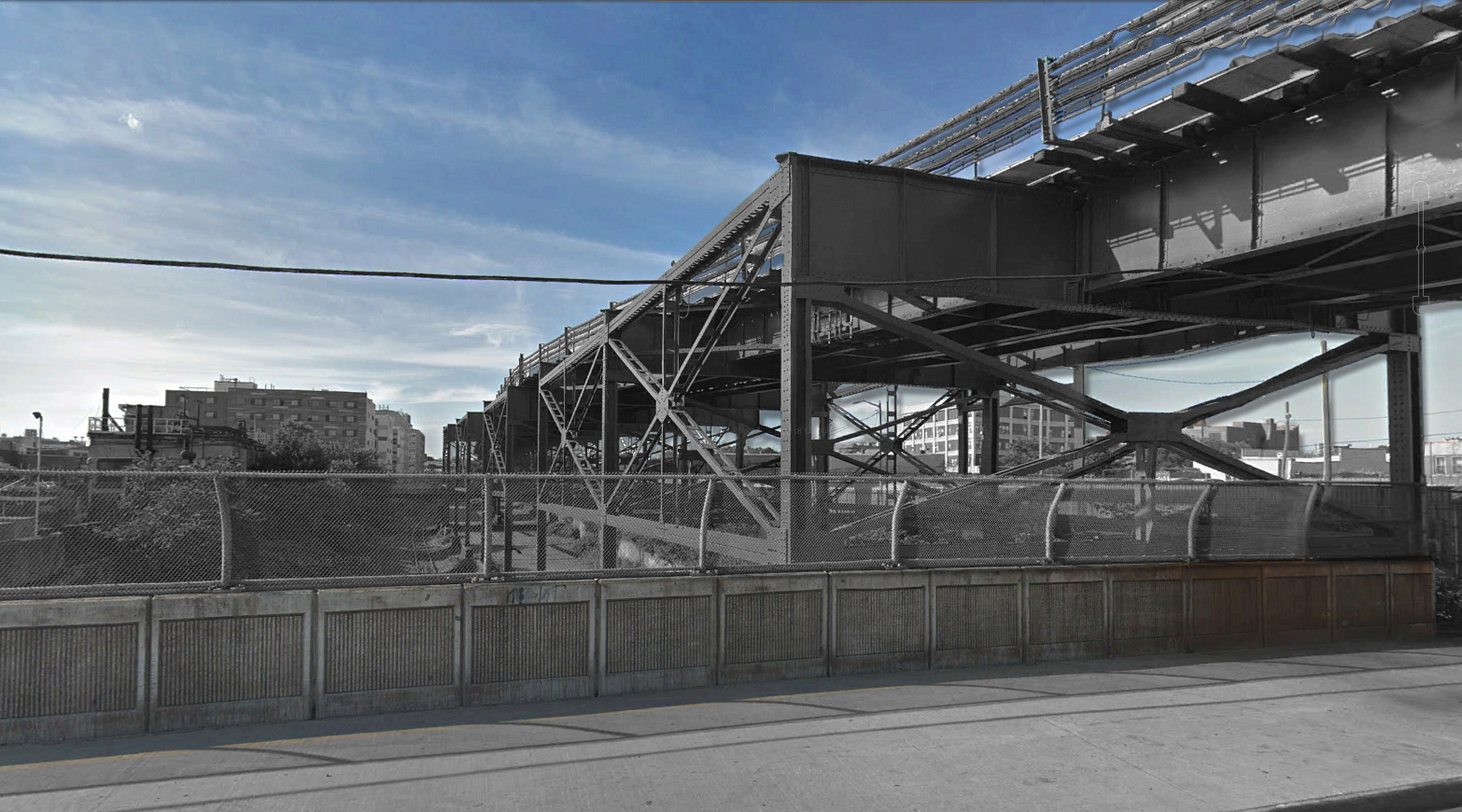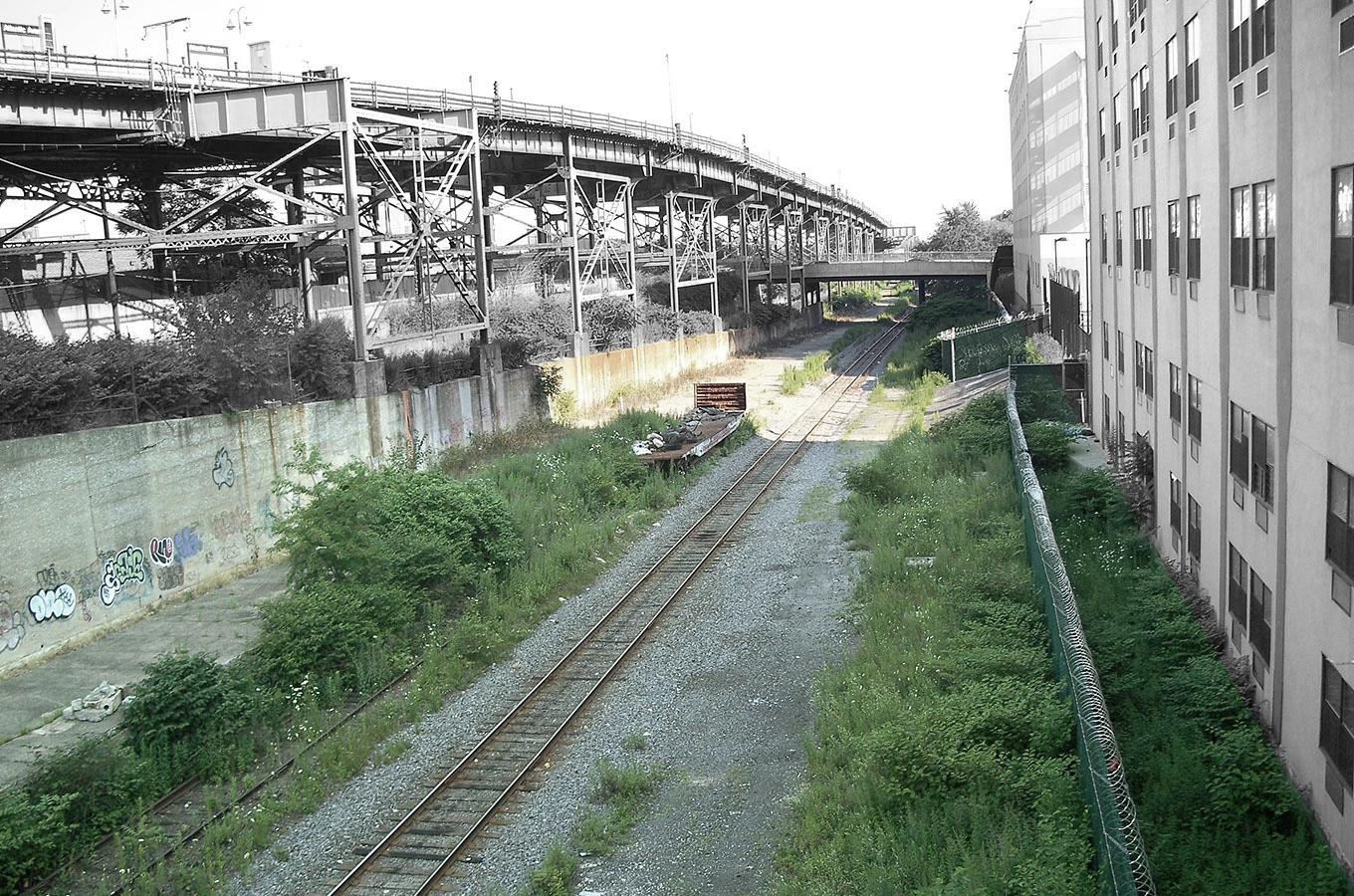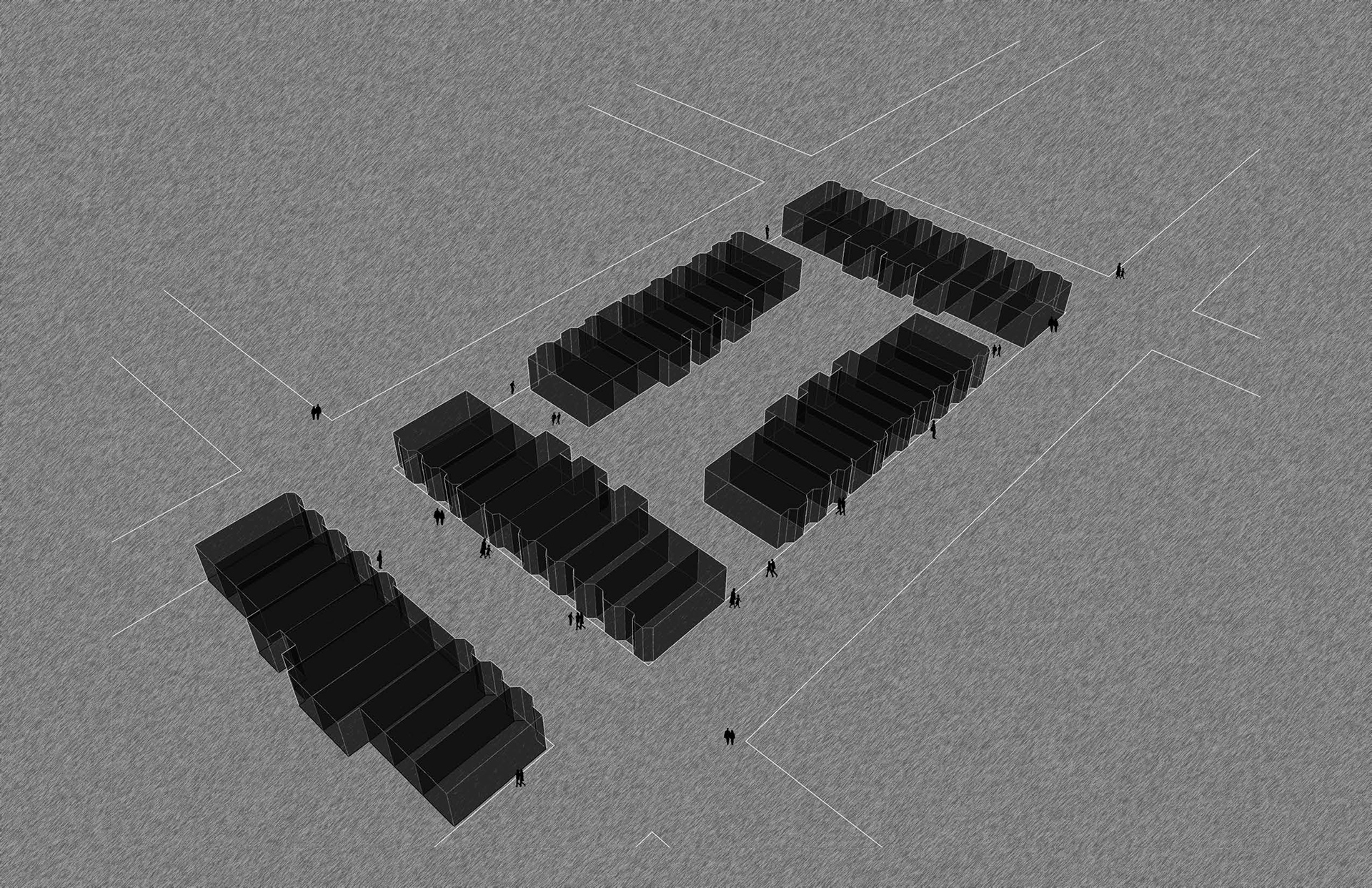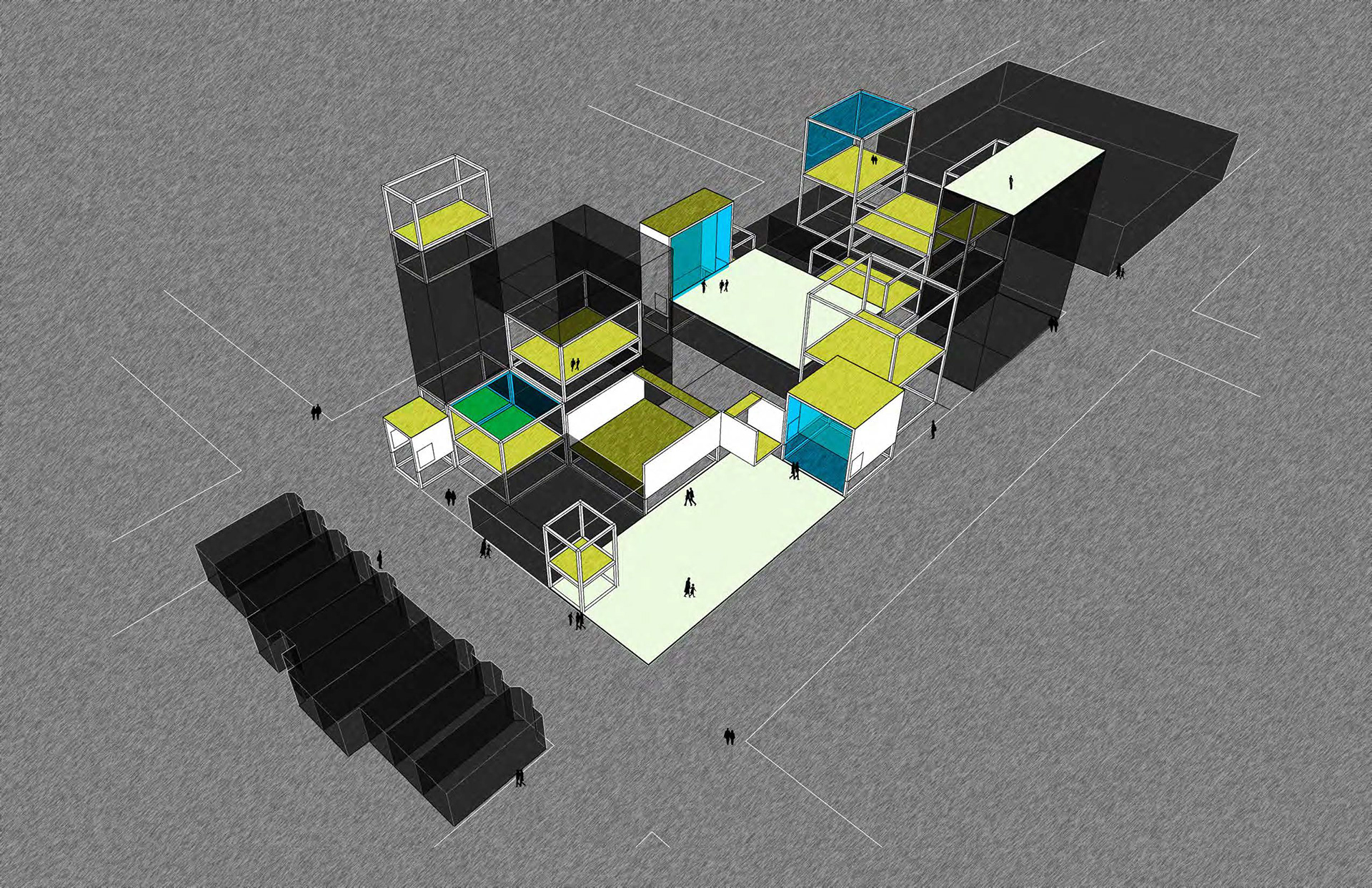‘Civic Strands’ is an urban strategy mediating where infrastructure meets the city and different ‘ordering logics’ come together: architecture, urban engineering and urbanism. It is a framework of potential ways of working within these spaces. New versatile modules (events) create a fabric interweaving civic uses within industrial buildings. The modules thread the existing railway infrastructure to create a new park. Diverse activities take place within a single environment in order to manufacture civic participation.
The South Brooklyn Line cuts through two neighborhoods that are transforming through community initiatives to overcome social and urban inequities. These neighborhoods, Brownsville and East New York, surround an Industrial Business Zone that is an underutilized asset for the economic growth of the surrounding area and the city.



Its residents envision a prosperous future that avoids gentrification. However, social and economic barriers are compounded by physical ones: The South Brooklyn line is a scar in the ground running between these neighborhoods and through the Industrial Business Zone. A parallel elevated transit line mimics this path and acts as a wall magnifying the visual barrier. The Industrial Business Zone’s typology of large industrial buildings and empty lots in the middle of residential scale buildings further increases the physical divide.
Figure-Ground Studies: IBZ Blocks, Buildings, Empty Lots and Surrounding Parks
The ‘ordering logics’ of an industrial zone within a residential area is nonexistent. A line was traced where industry had grown in the neighborhood in the 1800s but without any rules. Once the Industrial Business Zone was formalized a boundary was established without new strategies as to how to incorporate the IBZ with the surrounding neighborhoods.
The modules create a new type of industrial building manufacturing civic participation. Civic Programming is comprised of activities that are diverse in focus: it incorporates commercial, educational, political, recreational activities into a single environment.




At the IBZ the modules/events create a fabric that interweaves with the industrial buildings. The modules imply they are under construction, evolving and changing. They convey activities with forms to be determined. The goal is to invert the role and perception of this area from an isolated area to an integrated space of the city.
These events act as trees within a forest: Individually they are smaller elements within a field but their accumulation creates and defines a larger field that can dialogue between the infrastructure and the industrial zone. These events happen at different scales and through different time cycles of the city. It ranges from immediate and adjacent events that are part of the of the rail lines to those that are ‘discovered’ throughout the neighborhood.
The events can concentrate throughout the different portions of the IBZ to selectively focus to reestablish connections with the neighborhood.
The new typology humanizes people’s paths through the IBZ.

Existing Elevated Tracks

New park modules

Eventually the elevated line can come down
At the new park parallel to the elevated tracks, the modules act as thread-like with the existing sunken and elevated infrastructure to create a new landscape.
The new modules integrate with the new industrial buildings
The park modules can grow at different sections of the elevated line
New subway entries allow access to both the sunken and elevated lines
New landscapes are created above and below the sunken rail line
The new landscape can be a planted park and programmed with community spaces
The new industrial typology is open to the pedestrian experience
Roofscapes become public spaces